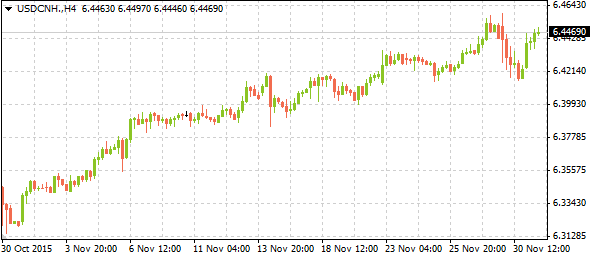Despite forecasts of 49.9 from the latest manufacturing PMI report in China, results disappointed yet again by releasing at 49.6 – a fourth straight month of contraction and the lowest level of activity in the index in over three years. China’s manufacturing sector cannot seem to manage to float above the critical 50.0 level that indicates an absence of contraction, with last month’s results of 49.8 and this month’s decline threatening to lead to three year lows of 49.2 somewhere on the horizon. To be above 50.0 in any of these benchmarks means that the industry is experiencing expansion, and this is still not the case although the Caixin Manufacturing Purchasing Manager’s Index did increase to 48.6 in November. Policymakers in China are trying to divert attention from manufacturing and exports, which are continually weak on the back of a strong US dollar, to services numbers that have not proven troublesome. The latest non-manufacturing reports have last month’s 53.1 reading giving way to November’s 53.6, likely due to holiday sales.

The impetus behind manufacturing, however, is another story. Economists from China’s National Bureau of Statistics are so far content to blame the present weakness on feeble foreign and domestic demand for Chinese goods. Even consumption from producers is falling, and falling prices in the producer prices category runs parallel to the notion, so far declining for the fourth straight year. Many peer governments look upon the Chinese with worry, as the massive economy is second largest among them and yet has still had an incredibly difficult time dragging itself out of the gutter. Chinese officials have enacted six rate cuts in the last year, even combined with cooperative fiscal-policy measures that are all seemingly in vain as manufacturing continues to fall. China’s goal of 7.00% growth this year looks to be out of reach, with this quarter’s 6.90% a slump from the last, and market participants predict more incoming monetary policy changes going into 2016.
